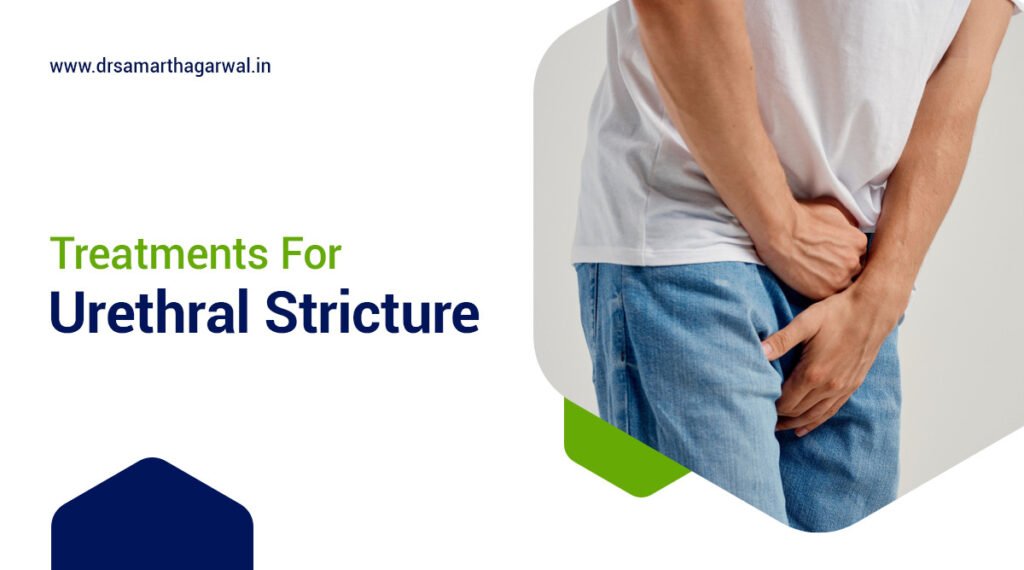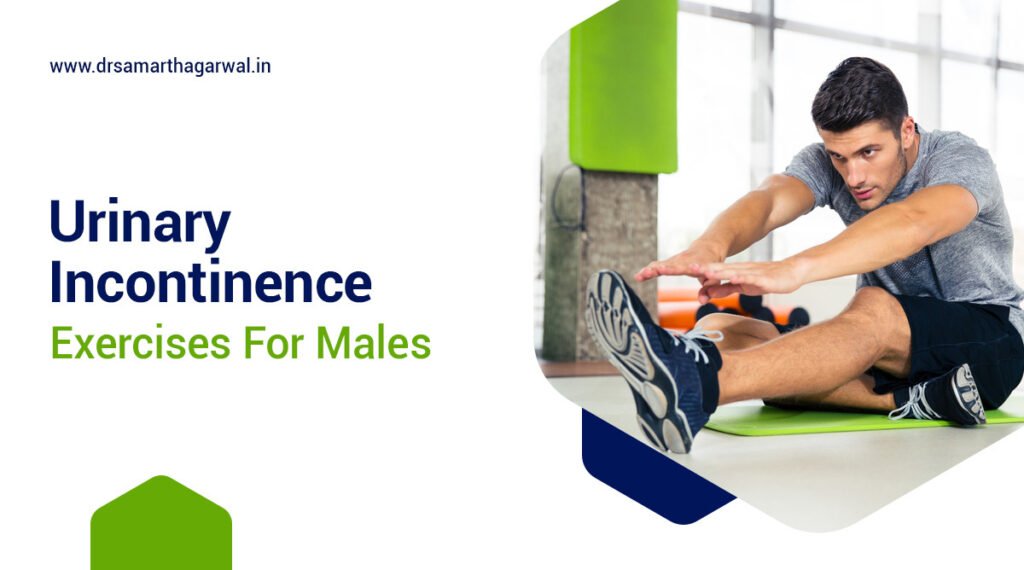Urethral stricture is a condition that can cause significant discomfort and complications in the urinary tract.
Understanding the causes of this narrowing of the urethra, such as infection causes, alongside its symptoms and diagnosis, is crucial for effective management.
This article explores various aspects of urethral stricture, including potential exercises like Kegel and pelvic floor exercises that may provide relief, and the role of yoga for stricture in enhancing flexibility.
It also covers treatment options, benefits of specific exercises, such as for urinary retention and bladder control, and how often to engage in them, helping you take informed steps toward better urinary health.
What Is Urethral Stricture?
Urethral stricture is a medical condition characterized by the narrowing of the urethra, the tube that carries urine from the bladder out of the body, often involving scar tissue. This condition can significantly impact urinary flow and lead to various urinary symptoms, including painful urination, urinary urgency, and urinary retention. Urologists often diagnose urethral stricture through physical exams and tests like cystoscopy and retrograde urethrogram, ultimately aiming to identify the best treatment options to restore normal urinary function.
What Causes Urethral Stricture?
Urethral stricture can arise from a variety of causes, including trauma, infections, and prior medical procedures such as prostate surgery, leading to scar tissue development. Urethral stricture not only affects everyday functioning but can also lead to more severe complications if left untreated.
Various factors contribute to the development of this condition, each carrying its unique implications:
- Infections: Conditions like urethritis, often stemming from sexually transmitted infections such as chlamydia and gonorrhea, can result in significant inflammation. This inflammation may lead to the formation of scar tissue, which narrows the urethra over time.
- Medical Treatments: Procedures like prostate surgery are sometimes necessary but can inadvertently injure tissues around the urethra, resulting in urethral stricture. Any manipulation in this sensitive area can provoke scarring, affecting urinary functionality.
- Congenital Factors: Some individuals are born with a predisposition toward strictures, making them more susceptible to problems later in life. Congenital stricture can manifest as a narrowing at birth, posing challenges in urinary tract function from an early age.
Understanding these causes and the role of anatomical structures is crucial in determining effective management and treatment options for this condition.
Are There Any Exercises For Urethral Stricture?
Yes, there are exercises that may help alleviate symptoms associated with urethral stricture by strengthening the pelvic area and improving overall urinary flow rate. These exercises, including yoga for stricture, can provide a range of health benefits by enhancing muscle control and bladder function. Engaging in regular physical activity may help manage urinary symptoms such as urinary urgency and frequency, making it a valuable complement to medical treatment.
Pelvic Floor Exercises
Pelvic floor exercises, also known as Kegel exercises, can help strengthen the muscles that support the urethra and bladder. This may improve urinary flow and reduce the risk of urinary tract infections. To do Kegel exercises:
- Tighten the muscles you would use to stop urinating. Hold for 5-10 seconds, then release.
- Repeat 10-20 times, several times per day.
- Be sure to only tighten the pelvic floor muscles, not the abdominal, leg or buttock muscles.
Stretching Exercises
Stretching exercises can promote flexibility and relaxation in the pelvic area, potentially alleviating discomfort and improving urinary symptoms associated with urethral stricture, aiding the recovery process. By incorporating these exercises into a regular routine, individuals may experience a range of health benefits that support the urinary system and overall urinary health.
Targeted stretching techniques can significantly enhance the wellbeing of those dealing with this condition. For instance, hip flexor stretches and butterfly stretches are particularly beneficial as they engage the muscles surrounding the pelvis. These movements help to:
- Increase blood circulation, thereby promoting healing in the affected areas.
- Reduce muscle tension, which can contribute to more significant pain and discomfort.
- Enhance flexibility, leading to improved range of motion during daily activities.
Incorporating these techniques into a daily practice can enable individuals to manage their urinary symptoms more effectively, encouraging a holistic approach to health and wellbeing.
Double Voiding
Double voiding involves urinating, relaxing for a few moments, then urinating again to ensure the bladder is fully emptied. This can help prevent urine from remaining in the bladder and reduce the risk of urinary tract infections. To double void:
- Urinate as usual.
- Relax for a few moments.
- Urinate again to fully empty the bladder.
And sitting in a warm bath can help relax the pelvic floor muscles and relieve urethral discomfort. Add epsom salts or bath oils to make the bath more soothing.
While these exercises may help manage urethral stricture symptoms, they do not treat the underlying cause. Most urethral strictures require surgical treatment such as urethral dilation or urethroplasty for definitive treatment. Consult with a urologist to determine the best treatment plan for your specific condition.
What Are The Benefits Of Urethral Stricture Exercises?
Urethral stricture exercises, including specific yoga practices, can offer significant benefits for individuals dealing with this condition. These targeted exercises focus on improving pelvic floor strength and flexibility, potentially aiding in the management of urethral stricture symptoms. While medical treatments are essential, complementary exercises may contribute to overall urinary health and well-being.
Key benefits of urethral stricture exercises include:
1. Enhanced urinary flow
2. Improved bladder control
3. Reduced urinary symptoms
4. Increased pelvic floor strength
5. Better overall urinary tract health
6. Potential reduction in stricture recurrence
7. Improved quality of life
8. Complementary support to medical treatments
9. Increased body awareness and mindfulness
10. Potential reduction in stress and anxiety related to the condition
How Often Should Urethral Stricture Exercises Be Done?
Urethral stricture exercises should be performed regularly for optimal results. Aim to practice 3-4 times per week, with each session lasting about 30 minutes. Include a variety of exercises such as stretching, strengthening, and relaxation techniques to target different aspects of pelvic floor health. Consistency is key to improving pelvic floor strength, urinary flow, and overall well-being. Monitor your progress and adjust your routine as needed, but always consult a healthcare professional before starting any new exercise regimen. By maintaining a regular practice, you can potentially experience significant improvements in managing urethral stricture symptoms and enhancing your quality of life.
What Are The Symptoms Of Urethral Stricture?
Symptoms of urethral stricture can vary in severity but commonly include urinary urgency, frequent urination, urinary retention, and in some cases, blood in urine, often requiring medical treatment. These urinary symptoms may significantly impact daily life and necessitate medical evaluation to determine appropriate treatment options.
Individuals suffering from this condition often experience discomfort and may occasionally face complications that disrupt their everyday activities. For instance,
- Frequent trips to the bathroom can interrupt work and social engagements.
- Inability to fully empty the bladder may lead to recurrent urinary tract infections.
- Visible blood in the urine can trigger unnecessary anxiety and concern.
Addressing these symptoms promptly is crucial, as they not only affect physical wellbeing but also can lead to psychological stress.
Seeking medical evaluation allows for proper diagnosis and opens the door to effective treatment strategies, including surgery for stricture or urethral dilation, tailored to restore quality of life.
How Is Urethral Stricture Diagnosed?
Diagnosing urethral stricture typically involves a thorough physical exam by a urologist, who will evaluate the patient’s urinary symptoms and medical history. Diagnostic tests, such as cystoscopy and retrograde urethrogram, may then be employed to visualize the urethra and identify any areas of narrowing. This comprehensive approach ensures an accurate diagnosis and informs the best treatment options moving forward.
What Are The Tests Used To Diagnose Urethral Stricture?
Urethral stricture is typically diagnosed through a combination of methods:
1. Medical history and symptom assessment
2. Physical examination
3. Urine flow tests (uroflowmetry)
4. Imaging studies like retrograde urethrogram or voiding cystourethrogram
5. Cystoscopy

What Are The Treatment Options For Urethral Stricture?
There are several treatment options available for urethral stricture, which can range from non-invasive methods like urethral dilation to more invasive surgical procedures, such as urethral surgery, performed by a urologist. The choice of treatment depends on the severity of the stricture, the underlying cause, and the patient’s overall health, with the goal of restoring normal urinary flow and minimizing complications.
Medications
Medications play an important role in managing urethral stricture, particularly when urinary symptoms are linked to infection causes such as urethritis or sexually transmitted infections. Antibiotics may be prescribed to address underlying infections like urethritis, while medications aimed at relieving urinary symptoms can help improve the patient’s quality of life.
Along with antibiotics, particularly for infections like chlamydia, various other medications can be invaluable in relieving discomfort and managing the condition. For instance, alpha-blockers may relax the bladder neck and urinary sphincter muscles, making urination easier for patients experiencing stricture-related obstruction.
Anti-inflammatory medications can help reduce pain and swelling in the urinary tract, providing further relief. Patients may also benefit from medications that help with bladder control and address urinary retention, minimizing urgency and frequency associated with urinary symptoms.
It is essential for individuals to consult healthcare providers to determine the most suitable treatment plan tailored to their specific symptoms and situations, including considerations for male treatment and female treatment.
- Antibiotics: Treat underlying infections
- Alpha-blockers: Facilitate easier urination
- Anti-inflammatory medications: Alleviate pain and swelling
Identifying and addressing the root causes of stricture can lead to more effective management and improved overall health.
Dilation
Urethral dilation, often considered after urethral catheter usage, is a common procedure used to treat urethral stricture by widening the narrowed urethra, thereby improving urinary flow.
This minimally invasive technique, forming part of active surveillance strategies, can effectively reduce the impact of scar tissue and alleviate urinary symptoms, making it a popular option among urologists. During the dilation procedure, a thin, flexible instrument is gently inserted into the urethra to gradually expand the area that has become constricted.
- Benefits: Patients often experience immediate relief from pain and discomfort as urine can flow more freely.
- Potential Risks: While generally safe, there are risks involved, such as infection or bleeding.
Following dilation, regular follow-up appointments with medical professionals are typically recommended to monitor for any recurrence of stricture or complications.
Urethroplasty
Urethroplasty is a surgical procedure aimed at correcting urethral stricture by removing the narrowed section of the urethra and reconstructing it, often utilizing tissue grafts. This option is typically reserved for more severe strictures and is associated with a longer recovery process compared to less invasive treatments.
Understanding when this procedure becomes necessary, such as when active surveillance is insufficient, is essential. Indications for urethroplasty typically include recurrent urinary tract infections, difficulty urinating, and significant pain during urination.
The surgical techniques can vary, but often include the use of tissue grafts, and might involve include anastomotic urethroplasty or substitution urethroplasty, depending on the location and extent of the stricture.
- Anastomotic urethroplasty involves directly connecting the healthy parts of the urethra after excising the narrowed section.
- Substitution urethroplasty uses grafts made from tissue sourced from other parts of the body to reconstruct the urethra.
Recovery expectations, monitored closely by the healthcare team, can vary based on the individual, but generally, patients may need to refrain from strenuous activities for several weeks and follow up regularly to monitor for any complications.
Post-surgery, it’s crucial to be aware of potential side effects, such as urinary incontinence or difficulty achieving erection, and communicate these to the healthcare provider.
Urethral Stent and Urinary Diversion
The placement of a urethral stent is a non-invasive treatment option for urethral stricture that involves inserting a small tube to keep the urethra open, which can significantly enhance urinary flow. This method, sometimes used alongside appendicovesicostomy or Mitrofanoff procedure for urinary diversion, is often used in cases where other treatments may not be viable, providing immediate relief from urinary symptoms.
This procedure, usually performed under local anesthesia, allows for quick recovery and minimal discomfort.
- The stent helps maintain an adequate passage through the urethra for urine, reducing the risk of complications associated with urinary retention.
- Patients often experience improved quality of life as they can better manage their urinary needs without the constant urgency or pain.
Despite its advantages, individuals considering stent placement, a form of urethral surgery, should be aware of potential complications. stent placement should be aware of potential complications. Effective monitoring is crucial, as conditions such as stent migration, blockage, or infection may arise. By reporting any unusual symptoms to a healthcare provider promptly, one can optimize the benefits of this procedure while minimizing risks.

Contact Dr. Samarth Agarwal if you have any questions or concerns about your Urinary health!





